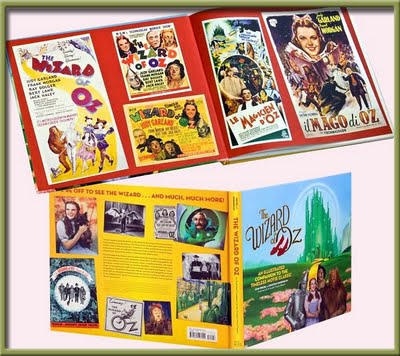Coffee table stunner brings Wizard and friends homeCOLUMBIA, 9/10/11 (Beat Byte) -- The idea that a 20-something Mizzou medical student may be one of the world's foremost experts on the history and preservation of a 70-year-old movie legacy might not compute until you see Jonathan Shirshekan's 2009 coffee table book, "The Wizard of Oz: An Illustrated Companion to the Timeless Movie Classic."Though you're not supposed to judge a book by its cover, the sequined red slippers, glimmering emerald towers, and colorful legendary characters smiling over the yellow brick road on this book's hard cover suggest the second year University of Missouri medical student has taken great care with this luscious pictorial journal.Labeled by some critics a definitive guide to the 1939 classic, Shirshekan's take on the famous Wizard and his four intrepid visitors was published by Turner Entertainment and co-authored with Emmy-award winning television producer and Judy Garland expert John Fricke. Its 160 pages of archival photos, documents, letters, and sketches detail every aspect of the famous production, including chapters on preproduction, "How Oz Came to the Screen," and "Oddities of Oz."Did you know, for instance, that the coat worn by Professor Marvel in the film belonged to the story's author, L. Frank Baum? Or that the name of Marvel's horse was "Sylvester?" Or that twister footage used in the film was so disturbing it was dropped from the final cut?Though the movie is perennial magic for viewers, the book reveals that daily shooting was anything but. "Every day I shuddered at the thought of climbing into the Tin Woodsman outfit," said actor Jack Haley. "I've described it as a portable torture chamber. To think they designed it for a role which involved dance is absolutely sadistic!"The movie's sheer size and complexity -- and a major MGM Studio blunder -- provided the opportunity for historic preservation, Shirshekan explained in a 2009 interview. "Planning, production, and promotion of Oz were done on the grandest possible Hollywood scale from January 1938 and well into 1940," he said. "As a result, there are countless research possibilities, archival investigations, and collections to search."The work was especially important because "M-G-M more-or-less junked its own history around 1970, by dumping production files, orchestrations, and etc., for all films into a landfill," he added. "As there's no central studio source for even the basic information...it's like gathering together a million-piece jigsaw puzzle, wherein some pieces no longer exist, and the others have been scattered all over the world from a low-flying plane."
The story's philosophy also seems to have inspired Shirshekan, who in his dedication writes, "To my parents, for bestowing upon me the brain, heart, and courage to succeed, and for elucidating the sanctity of home."RELATED:
Sidebar
Mobile Menu

 The Columbia Heart Beat
COLUMBIA, MISSOURI'S ALL-DIGITAL, ALTERNATIVE NEWS SOURCE
The Columbia Heart Beat
COLUMBIA, MISSOURI'S ALL-DIGITAL, ALTERNATIVE NEWS SOURCE

06
Sat, Dec
